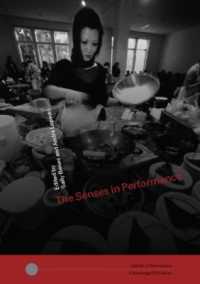Full Description
The twin atomic bombs that savaged Hiroshima and Nagasaki showed a horrified world what a Third World War might look like; its survivors even included British prisoners of war. Philosophers and politicians sought to come to terms with the new weaponry. As the Cold War began, and especially the Korean War in 1950, the UK set up the Civil Defence Corps, mainly of volunteers, much like Air Raid Precautions of the 1939-45 war. At local, regional, and national level, exercises to test preparedness for nuclear war required planners to imagine how war would come, and what bombing would look like. Exercises affected not only the obvious departments of government - police and fire services, and hospitals - but everyone; the railways, mines, retail and agriculture.The authorities faced dilemmas, beyond how much to tell the people, who in the main did not want to face another war, as the persistent trouble in recruiting and retaining civil defence volunteers showed.Should the official advice be, as in September 1939, to evacuate women and children from cities and towns most at risk of bombing? Or was it safer to stay put? A change from Hiroshima-strength atom bombs to megaton bombs in the later 1950s made for profound and sinister changes in civil defence. Hiroshima-style attacks were on a par with the very worst non-nuclear bombing of 1939-45, containable by Civil Defence; whereas a megaton bomb would wipe out housing and create fires for miles around, and spread radiation across the country. Farmland and cattle could be contaminated; making evacuation pointless, even harmful. How feasible was it for the authorities to send people by bus from lethally radioactive areas to less radioactive places? And if millions would survive, as the authorities assured the public, what would they eat?Life After Nuclear War is a blood-chilling, detailed reconstruction of official planning by the British authorities in the event of a nuclear war in Great Britain: a story revealing details of what officials thought would happen, and what the days, weeks, months and the years 'after' would look like, and how the Civil Defence Corps was planning for the 'unthinkable'.





